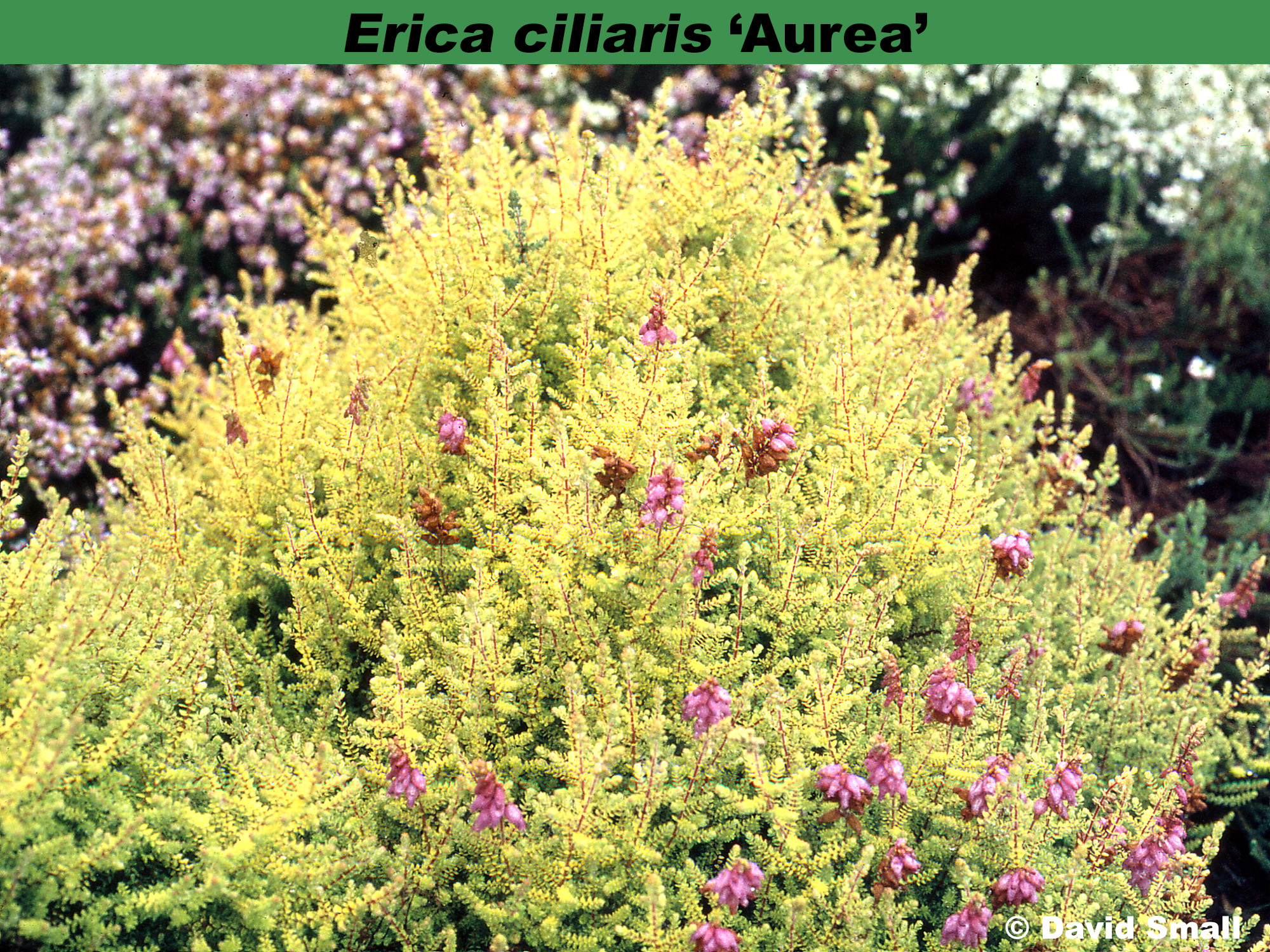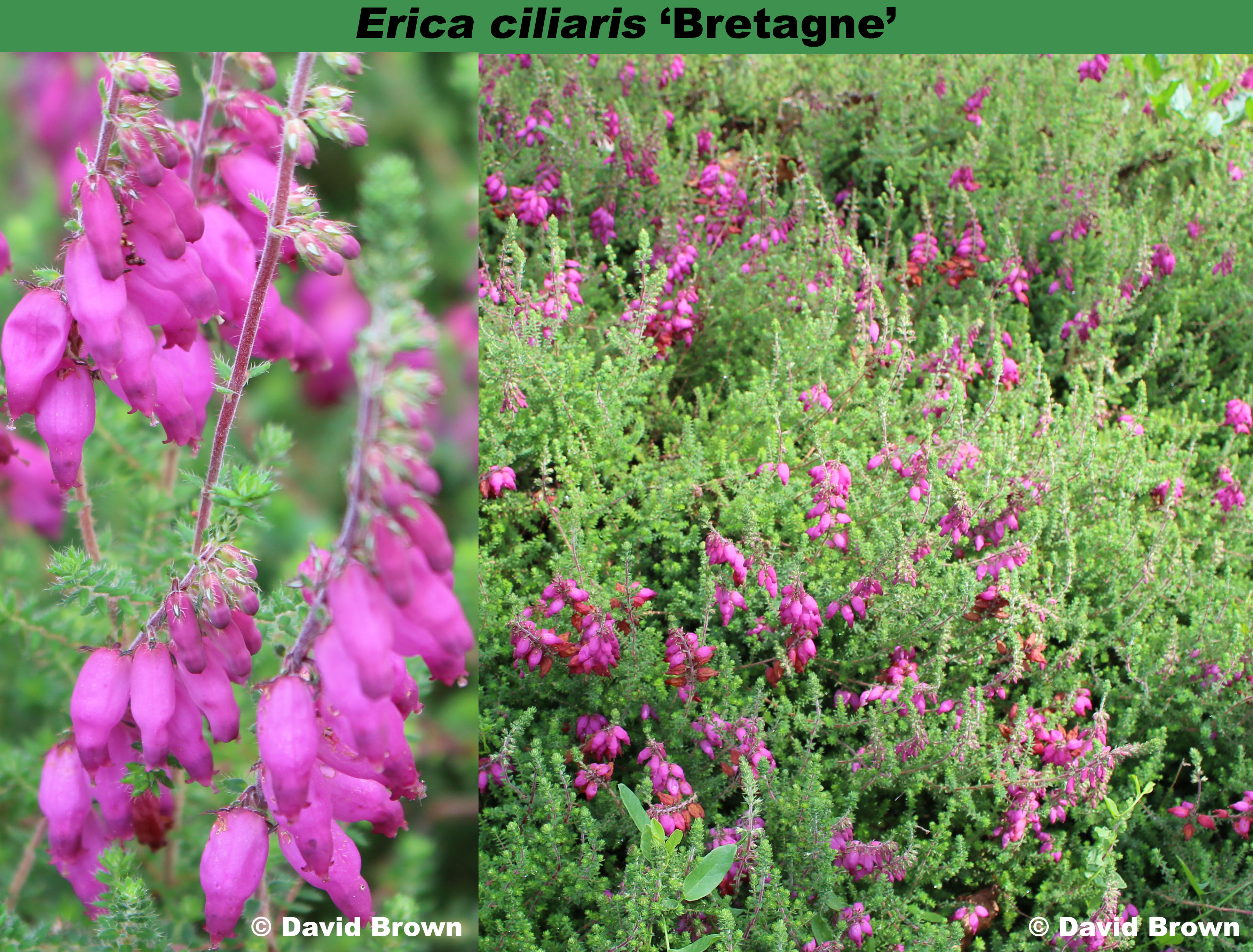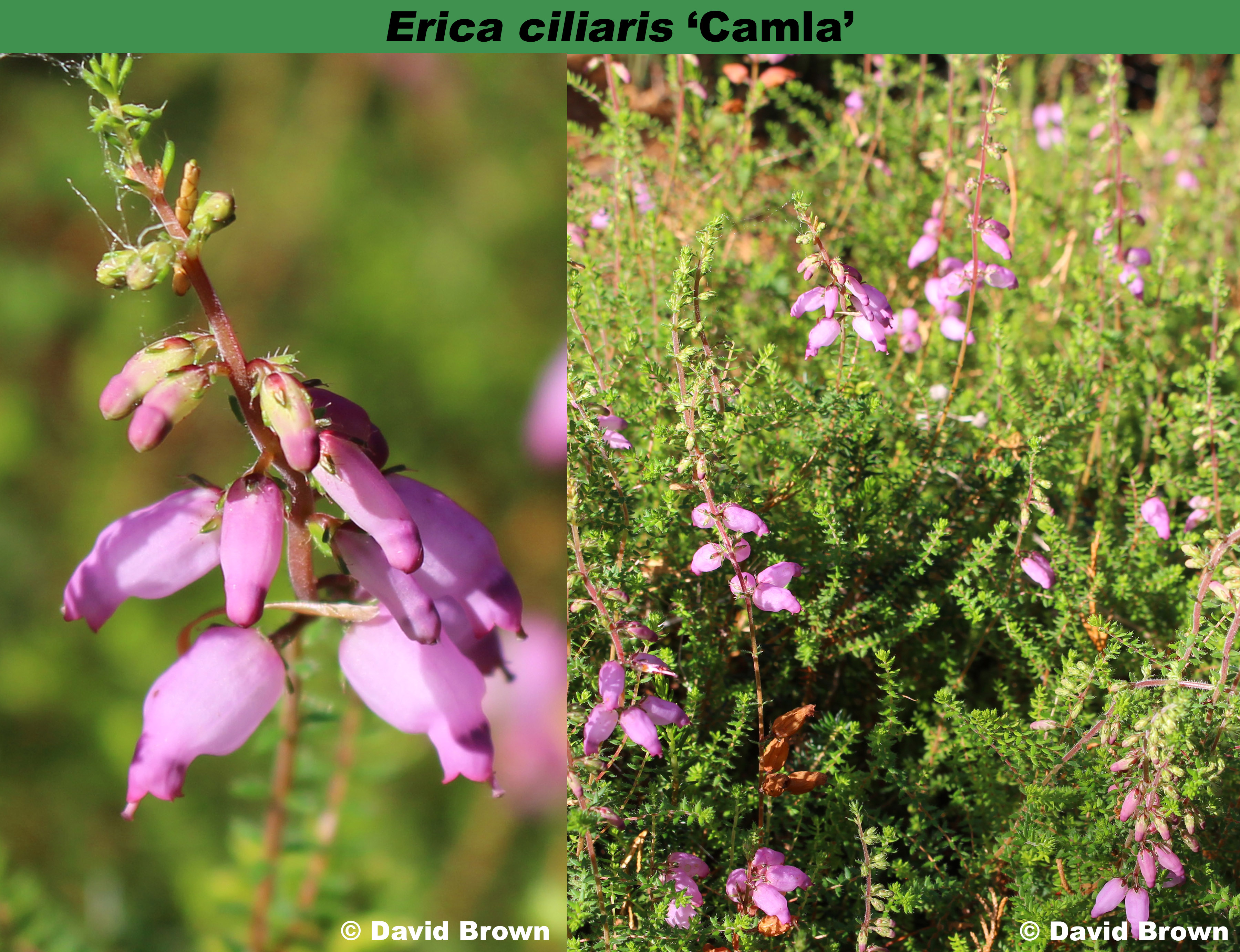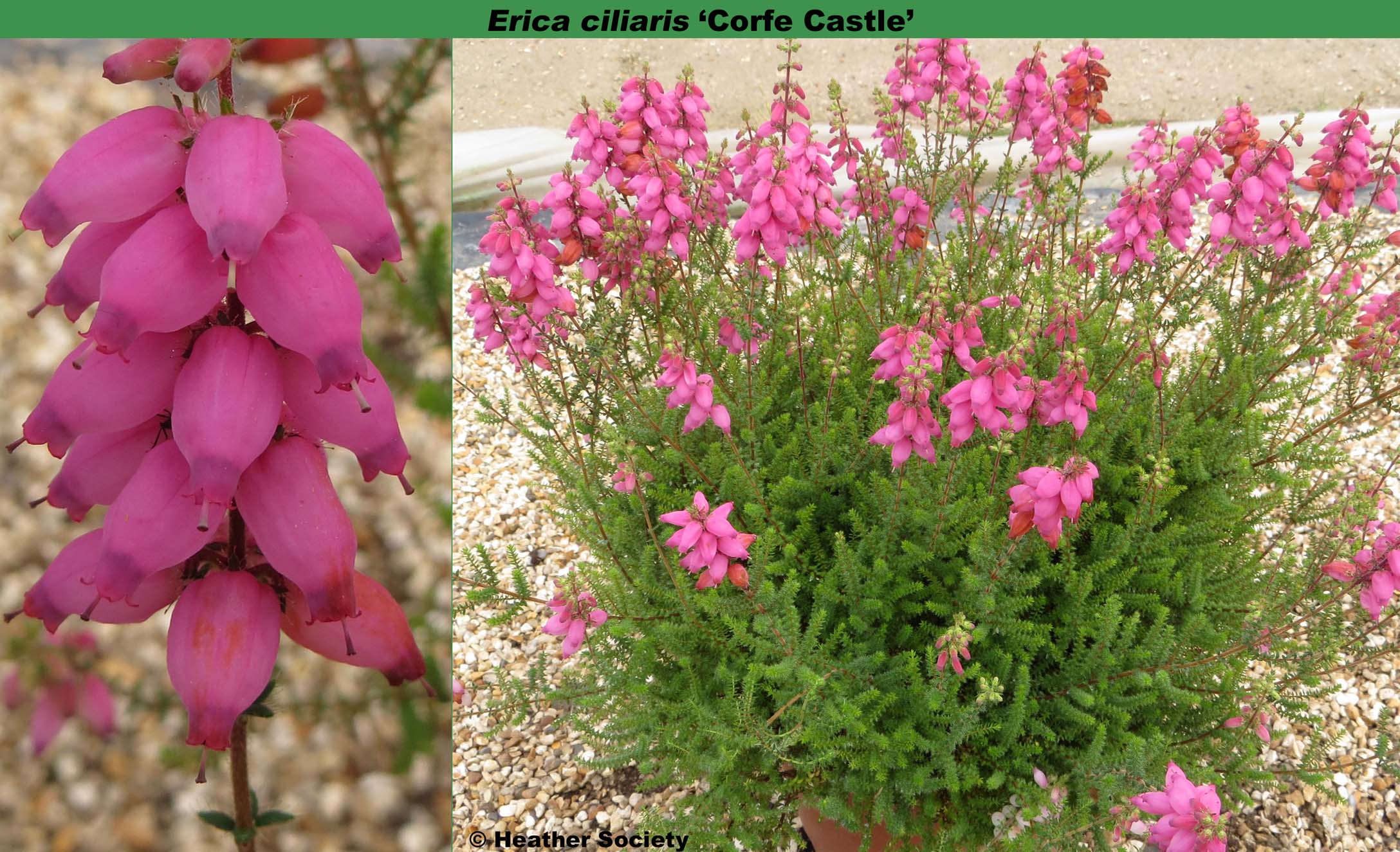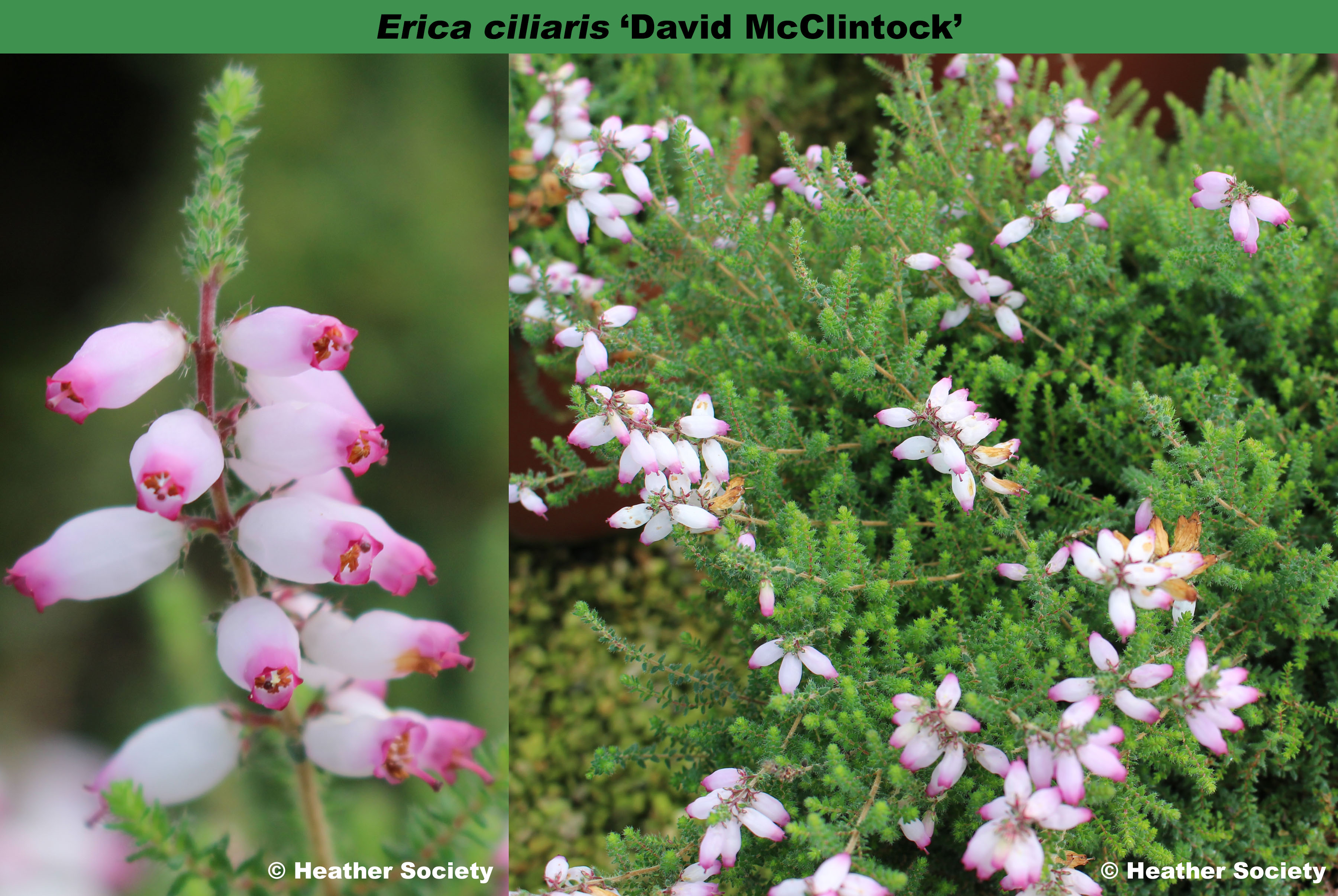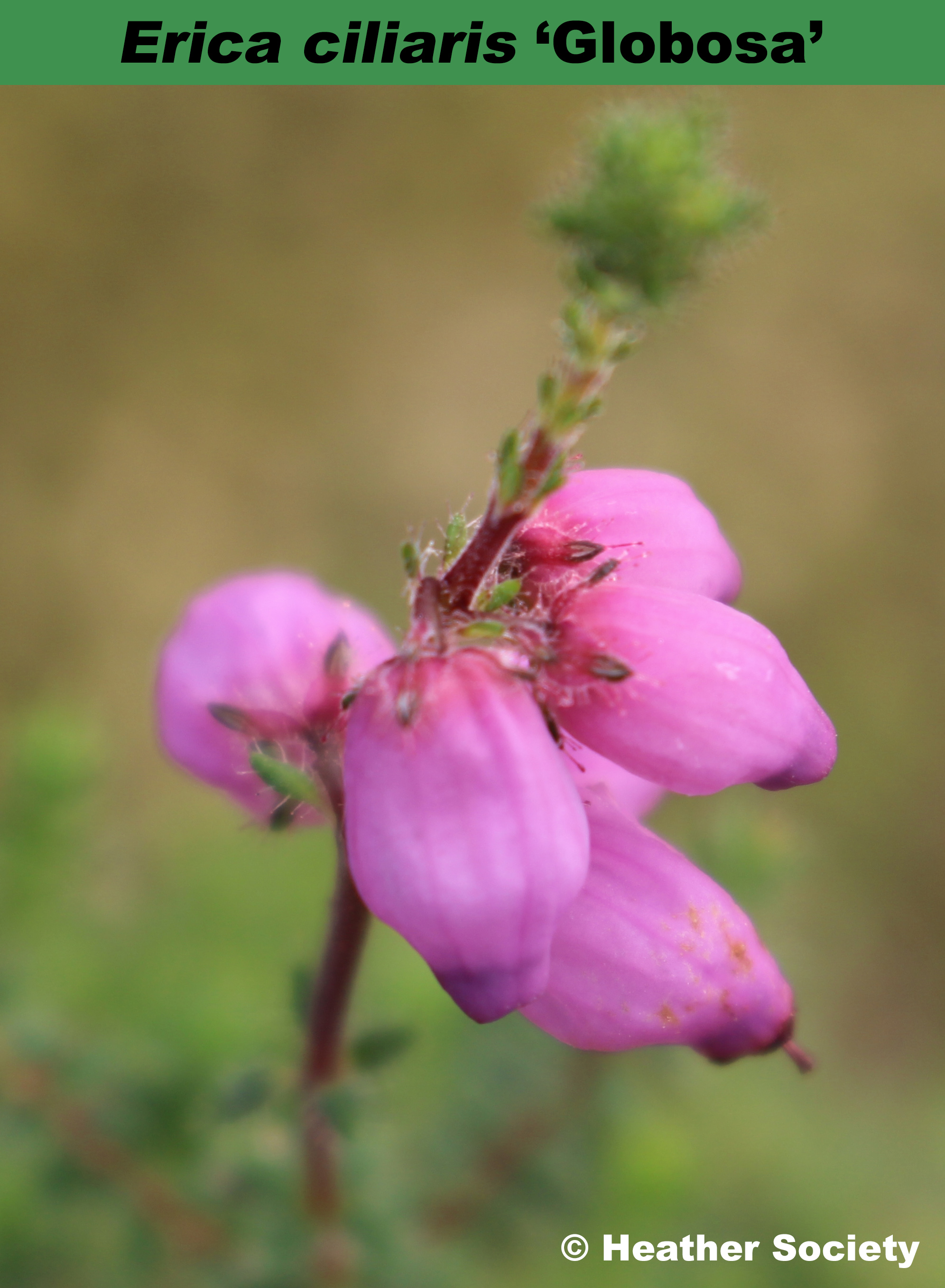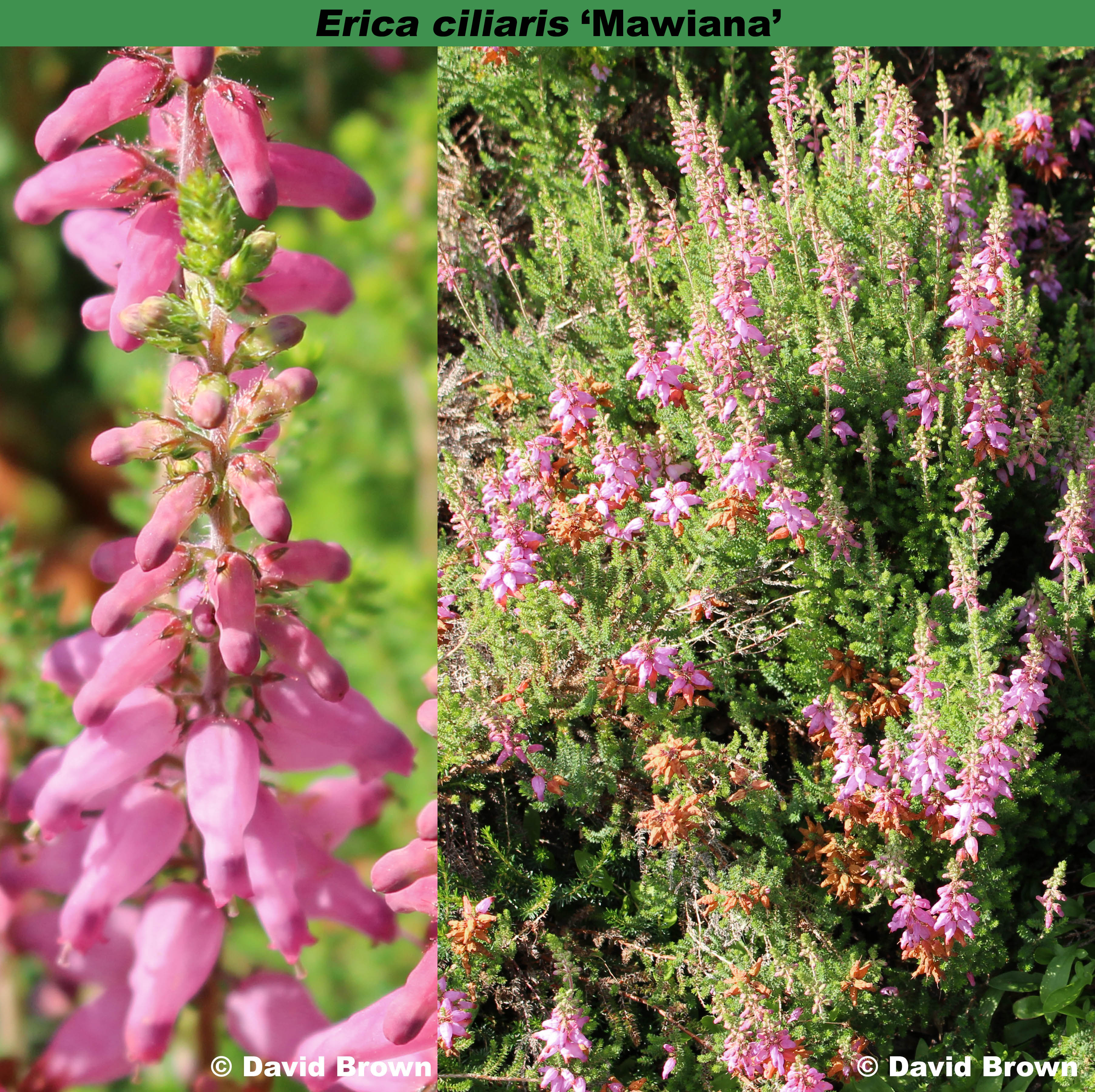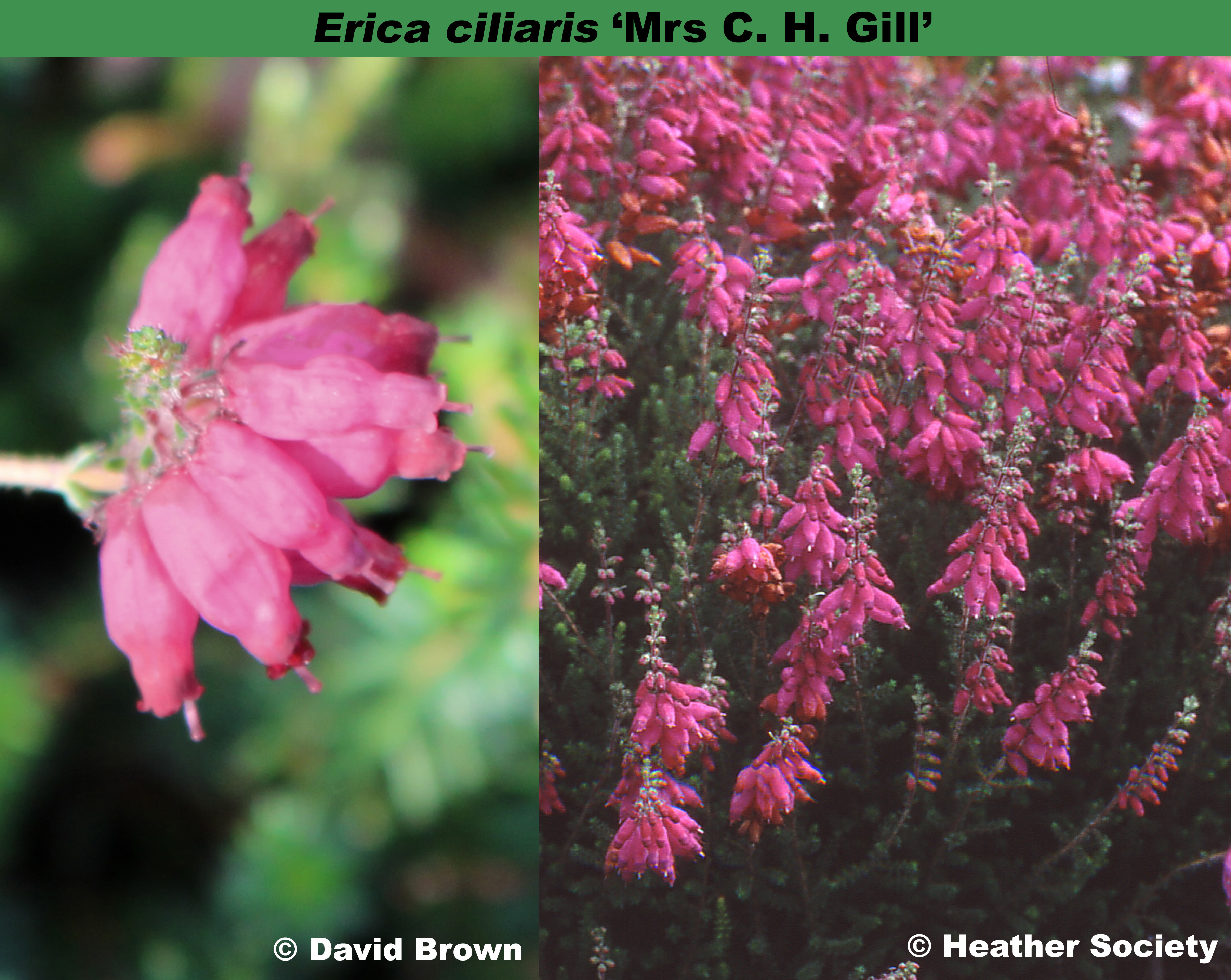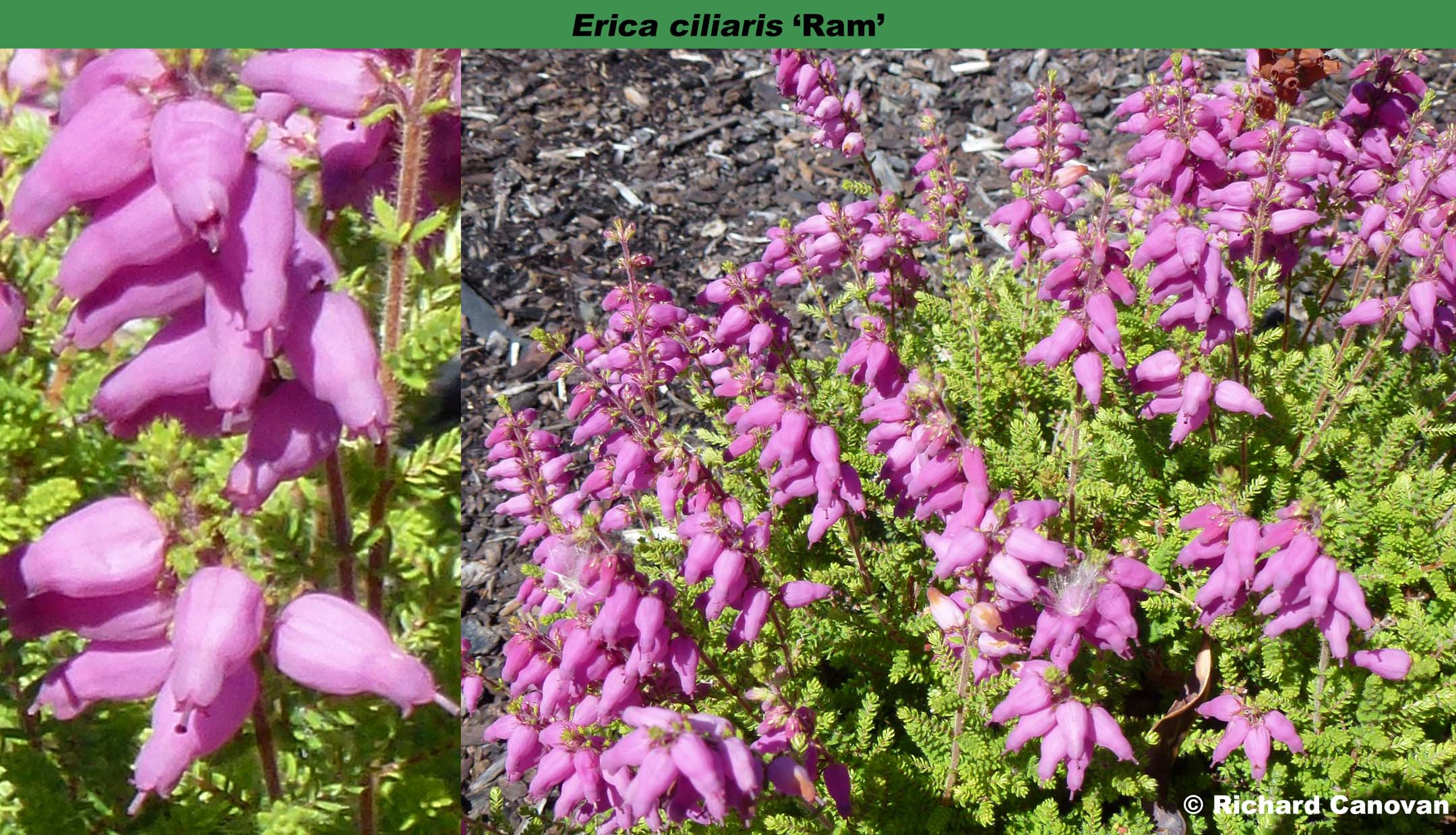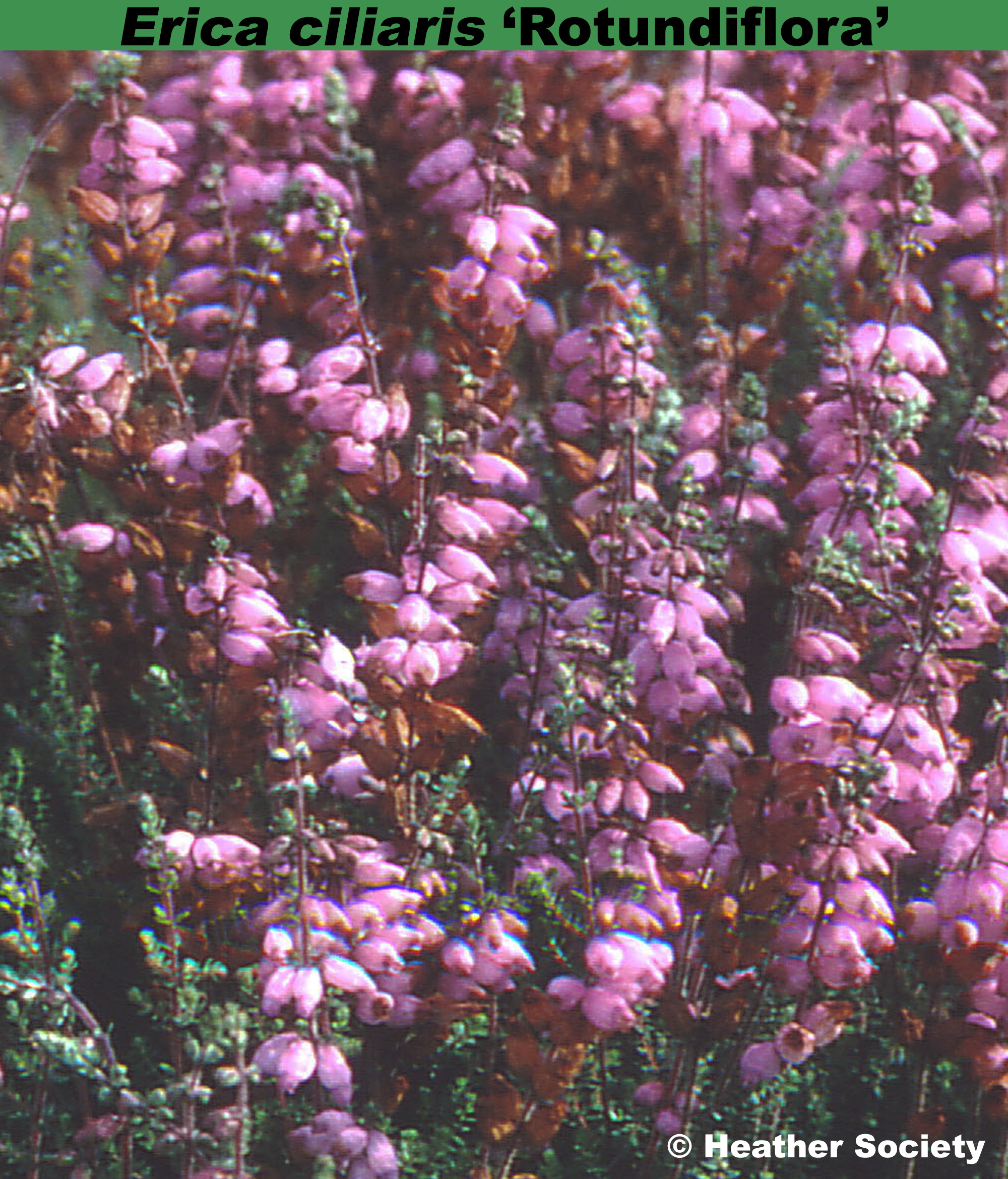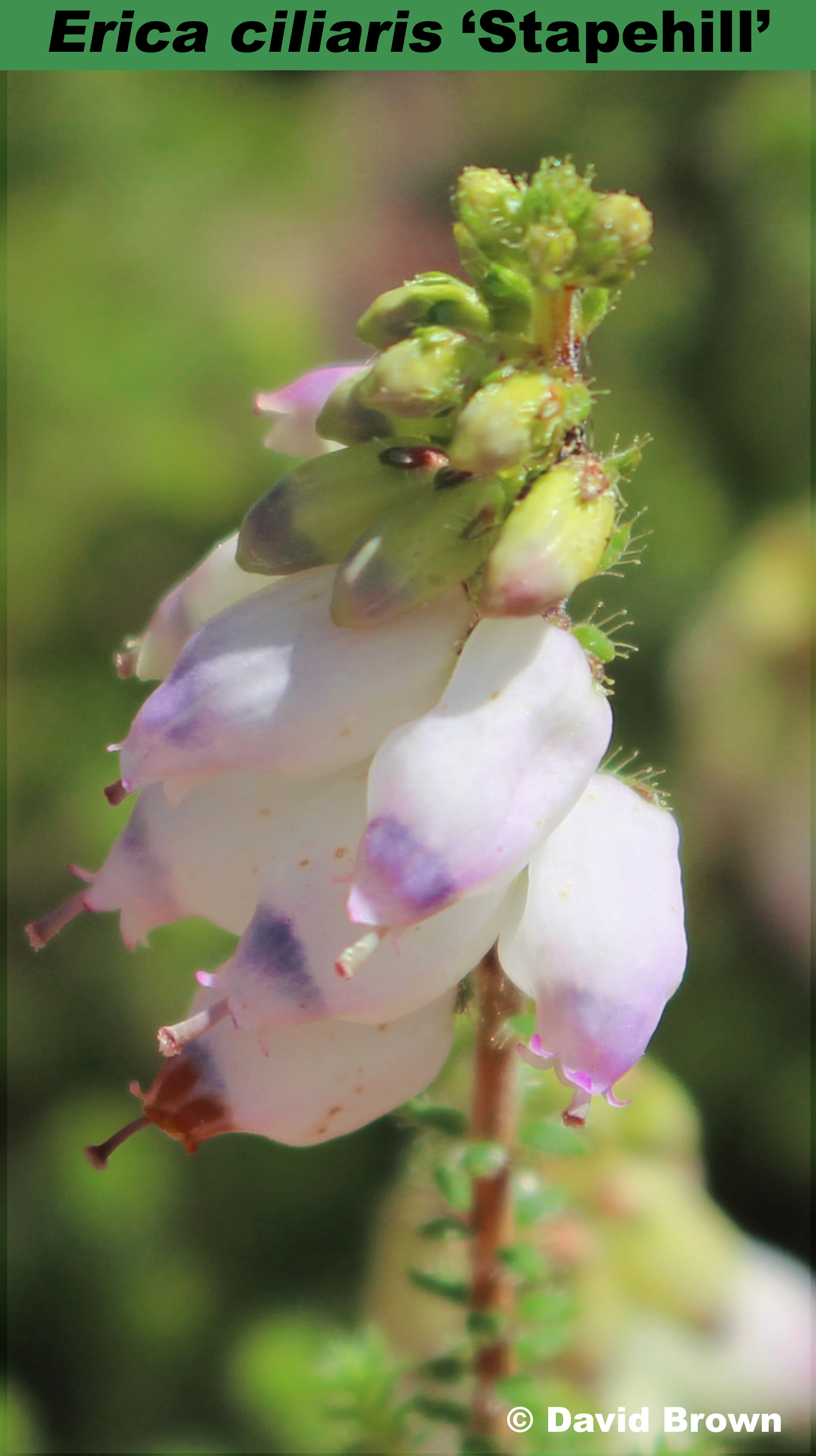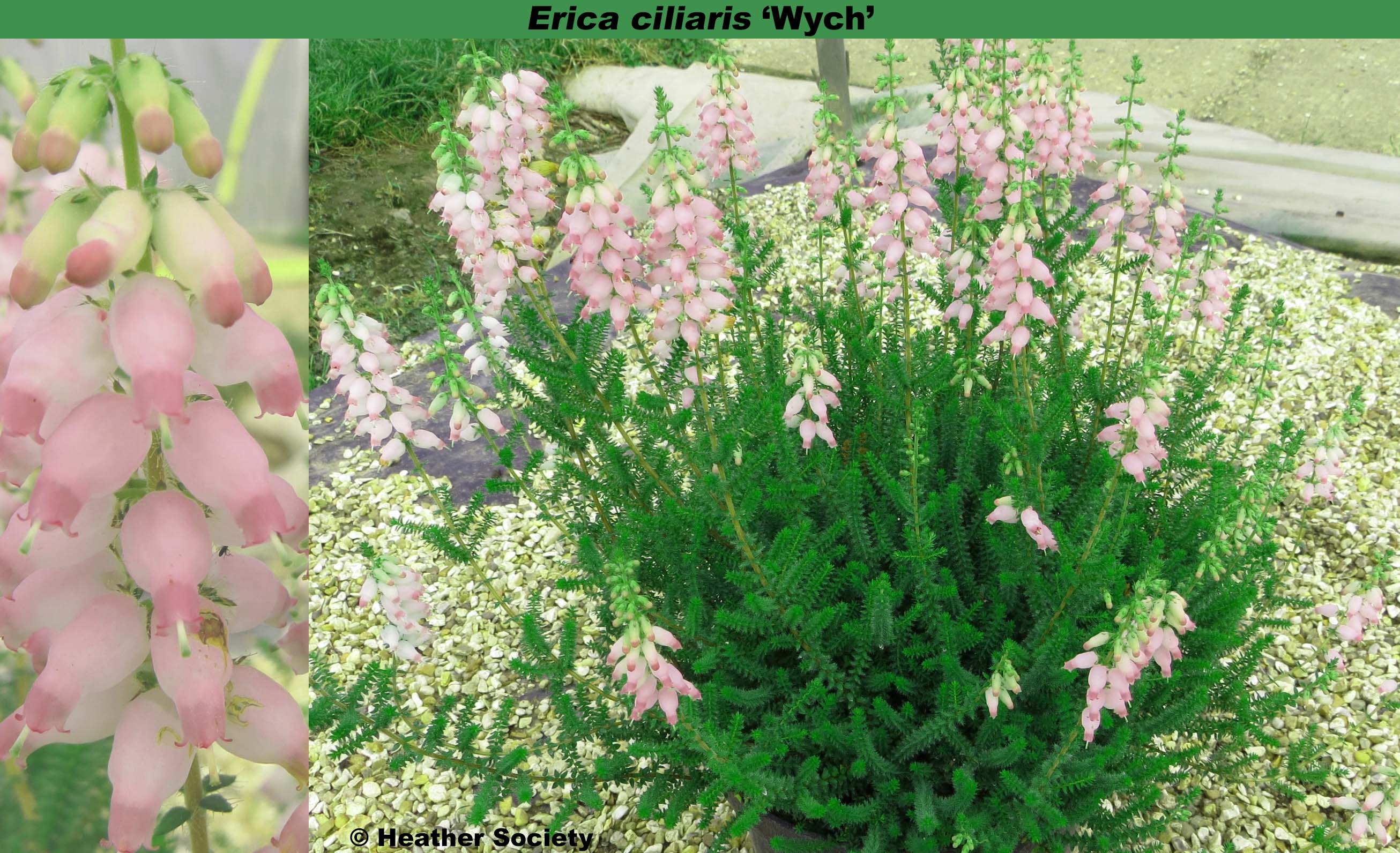Lilac-pink (H11) flowers, VIII–XI; straw-yellow foliage in summer, changing to coral in winter and spring; height 21–25cm; spread 46–60cm. Susceptible to damage in winter if planted in heavy ground, frost pockets or cold windy aspects.
Wild-collected; found near Wareham, Dorset, England, by D. F. Maxwell and introduced by Maxwell & Beale (Broadstone, Dorset) in 1927.
Named from aureus = golden yellow, after the colour of the foliage.

